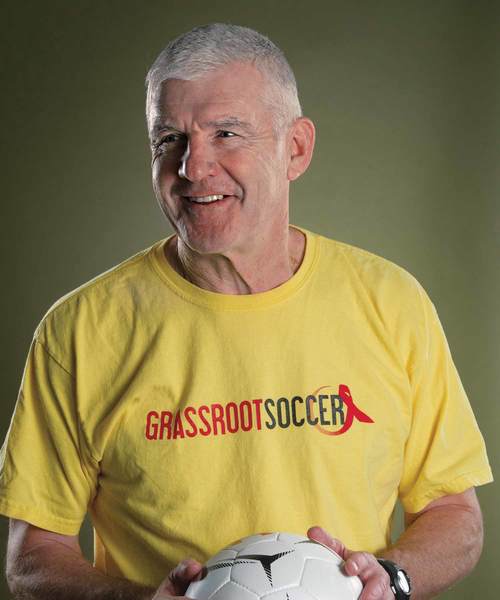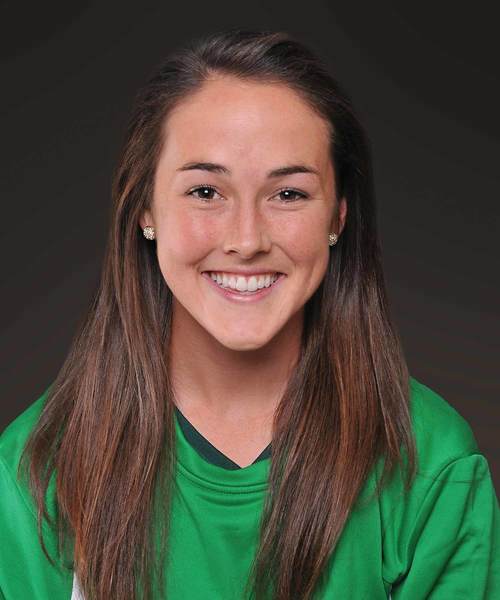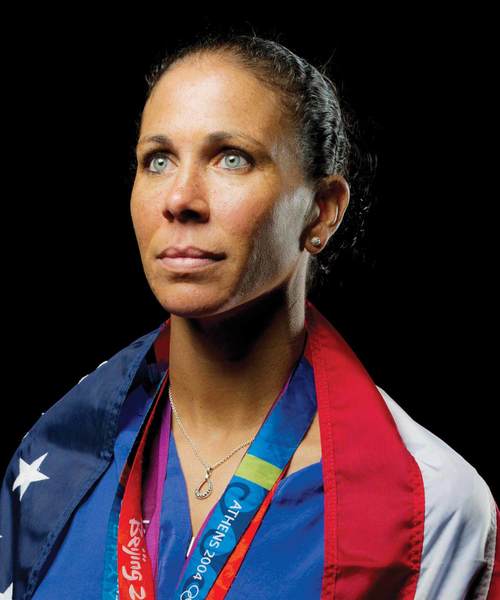
Bobby Clark
Grassroot Soccer: A different Irish soccer holiday
The University of Notre Dame men’s soccer team won its first NCAA Championship title in 2013. The following spring head coach Bobby Clark and his squad spent two and a half weeks in Africa on a foreign tour that featured equal components of soccer, sightseeing and service. This is Clark’s firsthand story of that journey.
During my time as head men’s soccer coach at Notre Dame, we had made foreign tours to Scotland in 2002, Brazil in 2006, then Denmark and Sweden in 2010. All three were wonderful adventures—they were terrific for building team spirit and provided great opportunities to experience another culture and international soccer.
As we discussed options for 2014, our sport administrator, Beth Hunter, came up with the idea of going to Africa. This seemed like a natural since the charity our team supports is Grassroot Soccer, an organization that uses the power of soccer to test and educate young Africans in sub-Saharan Africa about HIV.
Let’s run the clock back to 1983. I had just finished a 17-year playing career with the Aberdeen Football Club in the Scottish Premier League. I was at a crossroads in my life and, although I had several interesting opportunities, I was not sure which path to take.
As I was sitting at home, Roy Small, my old college lecturer from Jordanhill College, called. Roy was also a FIFA coach and had just returned from a coaching sojourn in Africa where he was asked if he could recommend someone to take the coaching reins in Bulawayo at Highlanders FC, a top Zimbabwean professional team.
This seemed completely out of left field, yet it was obviously very different. It seemed like a real adventure for Bette, my wife, and Tommy, Jenny and Jamie, my three children. So we went out to Zimbabwe and enjoyed a fantastic year. It allowed us all to enjoy a completely different culture and allowed me to coach on a full-time basis for the first time in my career. I loved it, and I knew then that this is what I wanted to do. I felt I could make a difference through teaching soccer.
Fast forward to 1993. Tommy, my oldest son, had just graduated from Dartmouth. He opted to return to Zimbabwe to teach and play soccer. He enjoyed another great experience, but during his year there he became aware of a huge problem. Friends and people we had known from our first trip in 1983 had died from HIV. There was a decided ignorance about the disease and also a stigma associated with it.
Fast forward once again, this time to 2001. Tommy had finished medical school at Dartmouth and was doing his residency as a pediatrician in Albuquerque, New Mexico. Challenged by one of his professors to come up with a plan that would help society, Tommy came up with the idea of using soccer as a medium to educate young Africans about HIV.
Soccer is a huge part of the modern African culture. Africans love the sport, and there are many talented players on the continent. Their professional players are heroes, so the basis of Tommy’s idea was to use these well-known individuals as role models who could run soccer clinics. Soccer would be a big part of these clinics, as that would be the draw. Yet the other, possibly more important, message involved HIV.
Tommy’s lecturer was both interested and intrigued by his idea and challenged him to put it into practice. That’s where Grassroot Soccer began and Tommy, rather than having a typical pediatric practice with 100 or more kids, now impacts around 100,000 young people on a huge African problem. He does this in a very targeted way, albeit through hundreds of local soccer players, community health workers—and now even Notre Dame soccer players.
Again fast forward to 2014 and the reason we decided to make our journey to Zimbabwe. Past trips had been great opportunities to see a different country and to play some international soccer games. Zimbabwe offered similar opportunities and also gave us the chance to be involved in HIV clinics in the African suburbs of Bulawayo, the second largest city in Zimbabwe. We also had two of our former Notre Dame soccer alumni on the ground in Bulawayo. Greg Klazura, a 2011 graduate, and Michael Rose, a 2012 graduate, were serving as interns for Grassroot Soccer, knew the local territory and put together an unbelievable trip that hit all three areas—soccer, sightseeing and service.
We began the trip as tourists—with back-to-back overnight flights—the first from Chicago to Frankfurt, then the following night from Frankfurt to Johannesburg. In Frankfurt we toured the city center and the Eintracht Frankfurt (a German Bundesliga soccer team) stadium. Once we settled into our Bulawayo base camp it was off to Victoria Falls where we experienced one of the natural wonders of the world.
Next up was the Hwange game park. We awoke around 3:30 in the morning, took a three-hour trip to the safari lodge, piled into safari jeeps and set off into the jungle. Giraffes, elephants, kudus, lions, hippos, crocodiles and a number of monkeys, baboons and birds of varying sorts were commonplace. Next came a visit to the Great Zimbabwe ruins (the largest ancient structure south of the Sahara Desert), while our final visit was to the Matobo National Park where we clambered around a series of granite kopjes.
The soccer was also top class. We played six games, three against Zimbabwe Premier League teams. We also played against a Premier League reserve team and two teams from the 1st Division, the league below the Premier League. The one that stands out for me was our 2-2 tie with Highlanders FC. This is the team I coached back in 1983 and the team currently atop the Premier League. The current Highlanders manager is Willard Khumalo, who I brought into the team as a 16-year-old back in 1983. Willard was a prodigy who went on to play for the Zimbabwe national team on 89 occasions and is now a very successful manager. Managing to tie up the game thanks to a spectacular bicycle-kick goal was a moment I will never forget.
There is no question being in Africa, seeing the sights, eating sadza (ground cooked corn) and stew with our fingers, eating grilled meals at a braii (African barbecue) and playing great soccer games were all fantastic. Yet what set this trip apart from all others was going into the townships with the Grassroot Soccer staff and participating in the HIV clinics. Seeing our team participating alongside the African children was very moving. There is no question the African boys and girls just loved having the makiwa (white guy) soccer players join them in the clinics and it was fascinating to see how the clinic leader would ask a question in isiNdebele (the native language) and the youngsters would answer back in English so their American friends would understand.
At the school clinics we began with HIV lessons (abstinence, your safety network, gender norms) and augmented those with soccer-related physical exercise that included high-energy dancing. There were lots of question-and-answer sessions, and our players worked hard to keep the kids’ attention.
Possibly the biggest clinic highlight came on the last day. We played a game against Bantu Rovers, a Premier League team coached by Methembe Ndlovu, a former player of mine from Dartmouth. Some of my Notre Dame players also will remember Methembe as he was a volunteer coach for Mario Manta’s Indiana Invaders team in South Bend. We chiseled out a 2-1 victory and then both teams went up to a township called Luveve where we participated in a clinic that opened a Football for Hope Center.
FIFA, the world governing body for soccer, promised 20 of these fields to be distributed around Africa and to be used with similar organizations. The field we opened was a nice little turf pitch enclosed with boards, similar to a hockey rink. Also attached was a building for meetings as well as testing for HIV. Soccer is the carrot that attracts the young boys and girls, and then there is the curriculum which teaches them how to avoid becoming infected, spreading the disease, and, if they are infected, how to live with it. It also discusses dealing with the social stigma.
An extra benefit of staying a few more days was the opportunity to spend some time with Tom Crotty, a 1979 graduate who was one of the major donors for our Alumni Stadium. Recently named a Notre Dame trustee, Tom is also chairman of Grassroot Soccer, so it was great for him to see the team play and, even more importantly, to see our Notre Dame players participating in the clinics.
This marked the first time we had added a service component to our foreign trip, but it is something I will seriously consider again because it was as good for our players as it was for the African children. We got every bit as much out of the experience as they did.

